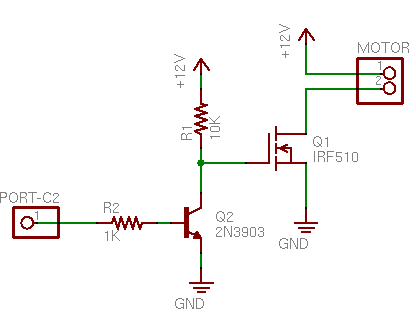Hi Gihan
First of all Welcome to ROBOT.LK!!! ???????? ?????????? !!!
The problem is, you are using low current transistors. 500 LEDs is too much to drive with transistors. According to what I have found C1815 is about 150mA. You can use power transistors. But the best option I see for you is Power MOSFETs which can drive quite a lot of current.
Have a look at following FETs.
IRF 510 - ~5A (Aprox. 5 Amperes)
Datasheet -
http://www.irf.com/product-info/datashe ... irf510.pdf
IRF 520 - ~9A
Datasheet -
http://www.irf.com/product-info/datashe ... irf520.pdf
IRF 540 - ~30A (I think this will be good for you. I remember this was about LKR 50)
Datasheet -
http://www.irf.com/product-info/datashe ... rf540n.pdf
Here is a circuit diagram.

- fet.png (9.35 KiB) Viewed 12029 times
Keep noted that FETs are more susceptible to static electricity damage. However don't worry too much on this.
A good way to drive an FET is by using a transistor as in following circuit diagram. Keep noted that following circuit will invert the uC output.

- fettrn.png (1.94 KiB) Viewed 12027 times
Furthermore, if you are using a very high current (say 10A) it would be better to use optocouplers (also known as opto-isolators) in conjunction with Power MOSFETs. This will isolate microcontroller from power side. 4N25 is a good optocoupler for microcontroller applications.
Since it works for one LED nicely, I don't think I'll have to investigate your code.
I would also love to know more about you just as the other members. If you could write a little description about yourself in
Introductions, it would be easier for everyone to get to know you better. Our facebook group is at
http://www.facebook.com/groups/robot.lk/. Join with that and add all your friends to the group. So we can spread the message faster.
Good luck to you! Don't forget to submit your feedback.




